Acoustic vs Electric Guitar Sound Comparison: What’s Best?
Category: Guitar Gear
Discover the True Sound Differences Between Acoustic and Electric Guitars
Whether you're a budding guitarist or an experienced musician exploring new tones, understanding the sound differences between acoustic and electric guitars is essential to shaping your musical journey. You might have searched for “acoustic vs electric guitar sound comparison” because you want to know which guitar fits your playing style, recording needs, or performance environment better. Perhaps you’re deciding which guitar to buy next or how to dial in your tone effectively for a specific genre or effect.
This post dives deep into the sonic characteristics, tonal qualities, and practical applications of both acoustic and electric guitars, addressing common questions around sound output, versatility, and adaptability to effects. Unlike many generic comparisons, here you'll get a structured, in-depth analysis purposely crafted for guitarists who are not just curious but serious about refining their approach — whether in live settings, studio recording, or home practice.
We’ll explore the physics behind the sound, typical styles best suited to each type, and how gear choices influence their signature tones. By the end, you'll have a clear, informed perspective to confidently choose or optimize your guitar sound for your playing aspirations.
- Discover the True Sound Differences Between Acoustic and Electric Guitars
- Physical and Structural Differences Influencing Sound: Body, Strings, and Construction
- How Acoustic Guitar Sound is Produced: Resonance, Soundboard, and Natural Amplification
- Electric Guitar Sound Generation: Pickups, Amplifiers, and Signal Processing Basics
- Tone Characteristics: Warmth, Brightness, Sustain, and Dynamic Response Compared
- Effect of Playing Techniques on Sound: Fingerpicking, Strumming, Bending, and Picking Dynamics
- Impact of Gear and Effects Pedals on Each Guitar’s Sound: Overdrive, Reverb, Delay, and More
- Genre and Style Suitability: Which Guitar Sounds Best for Rock, Blues, Jazz, Folk, and Metal
- Recording and Production Considerations for Acoustic vs Electric Guitars
- Portability, Stage Volume, and Practical Applications: Live Performance Versus Studio Use
- Choosing Your Guitar Based on Sound Preferences and Musical Goals
Physical and Structural Differences Influencing Sound: Body, Strings, and Construction
The distinct sound characteristics of acoustic and electric guitars are deeply rooted in their physical makeup and construction methods. At the core, acoustic guitars produce sound through their hollow bodies, which act as natural resonators. When the strings vibrate, their energy transfers to the soundboard (top wood), causing the air inside the body to resonate and amplify the sound organically. This is why the type of wood (tonewoods) used for the top, back, and sides—such as spruce, cedar, or mahogany—significantly impacts the warmth, brightness, and sustain of an acoustic guitar’s tone. Additionally, the guitar’s larger and thicker body creates a fuller and more projecting sound, essential for playing in unplugged or small ensemble settings.
On the other hand, electric guitars rely primarily on pickups and electronic amplification to produce their sound. Their solid or semi-hollow bodies do not resonate acoustically in the same way an acoustic guitar does. Instead, the steel strings’ vibrations are captured by magnetic pickups, which convert mechanical vibrations into electrical signals. This fundamental construction difference means that electric guitars can use thinner bodies and different tonewoods—like alder, ash, or maple—focusing more on sustain, feedback control, and tonal versatility rather than natural projection. Moreover, electric guitar strings tend to be lighter gauge, favoring lower tension and easier bending, which contributes to the distinct brightness and attack often associated with electric guitar sound.
Understanding these physical and structural distinctions clarifies why acoustic guitars offer rich, resonant, and natural tones while electric guitars provide a broader palette for tone shaping through amplification and effects. These elements form the foundation for any guitarist aiming to master the nuances between acoustic versus electric guitar sound.
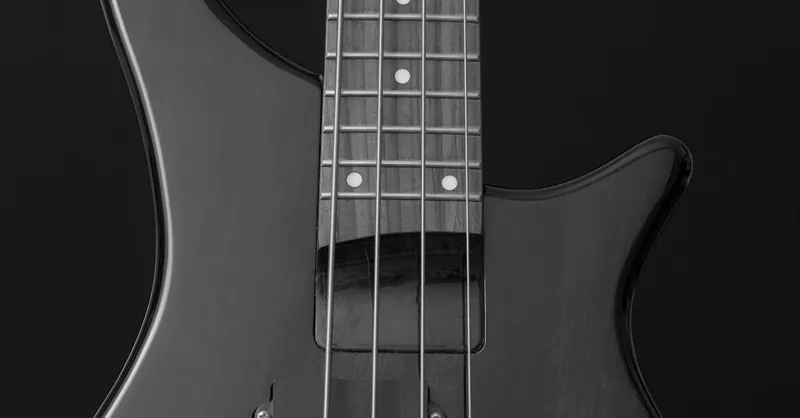
Image courtesy of Pixabay
How Acoustic Guitar Sound is Produced: Resonance, Soundboard, and Natural Amplification
The distinctive sound of an acoustic guitar stems primarily from the complex interaction between the vibrating strings, the soundboard, and the guitar’s hollow body cavity. When a string is plucked, its vibration alone is hardly audible at high volume or rich in tone. However, this vibration transfers to the soundboard (the top wooden surface) via the bridge, causing the soundboard itself to vibrate sympathetically. Because the soundboard is a thin, flexible piece of wood typically made from tonewoods like spruce or cedar, it amplifies the string vibrations by acting as a highly efficient natural resonator.
Inside the acoustic guitar body, the air chamber comes into play, vibrating in sync with the soundboard to further enhance volume and tonal richness. This natural amplification process produces the warm, full-bodied sound acoustic guitars are known for—characterized by a balance of bass depth, midrange presence, and sparkling highs. The size and shape of the guitar body, the bracing pattern under the soundboard, and the type of wood used all influence how sound resonates and projects. For example, larger dreadnought bodies deliver louder and bass-heavy tones, while smaller concert or parlor guitars offer clearer mids and articulate fingerstyle details.
Key factors in acoustic guitar sound production include:
- Soundboard Material and Thickness – Determines responsiveness and tonal clarity.
- Bracing Pattern – Supports the soundboard while shaping resonance and sustain.
- Body Cavity and Shape – Influences air resonance and sound projection.
- Bridge and Nut Quality – Facilitates efficient vibration transfer from strings to body.
This sophisticated natural resonance system allows acoustic guitars to produce woody, organic tones without any electronic amplification, making them ideal for solo playing, unplugged sessions, and genres emphasizing warm, authentic sound textures. Understanding these acoustic principles is crucial for guitarists aiming to achieve the perfect unplugged tone or to properly mic and record acoustic guitars in a studio environment.

Image courtesy of More Amore
Electric Guitar Sound Generation: Pickups, Amplifiers, and Signal Processing Basics
Unlike acoustic guitars, the electric guitar’s sound production is entirely dependent on electronic components rather than natural resonance. At the heart of this process are the magnetic pickups, which transform the vibration of steel strings into electrical signals. These pickups consist of magnetized coils wrapped around a core that senses the string’s movement, generating an electrical current that mirrors the string’s frequency and amplitude. The type, configuration, and placement of pickups—such as single-coils or humbuckers—play a crucial role in shaping the guitar’s tonal character, affecting brightness, warmth, clarity, and output level.
Once this signal is captured, it flows through various stages of amplification and signal processing, where the guitarist can further sculpt the tone. The amplifier boosts the weak electrical signal and colors it using preamp and power amp circuits, speaker configurations, and cabinet design. Analog tube amps, solid-state amps, and digital modeling amps each offer unique tonal qualities ranging from warm, harmonically rich distortion to crisp, clean sounds. Additionally, the use of effects pedals and processors—such as overdrive, delay, modulation, and reverb—allows electric guitarists unparalleled control over their sound, enabling styles from blues and jazz to heavy metal and experimental music.
Key components in electric guitar sound generation include:
- Pickups: The initial transducers that define raw tone characteristics.
- Amplifiers: Devices that boost and shape the timbre and dynamic response.
- Signal Processing: Pedals and rack units that add effects and tonal effects.
- Speaker Cabinets: Influence tonal resonance and sound projection in live settings.
Mastering the interaction between pickups, amplifiers, and effects is essential for electric guitar players seeking to optimize their tone for studio recording or live performance. Understanding these elements offers deep insight into why electric guitars can produce such a vast range of sounds, from smooth, clean jazz tones to aggressive, distorted rock riffs—tones that acoustic guitars typically cannot replicate. This electronic signal chain unlocks a world of versatility and customization, making the electric guitar a powerhouse for innovation and sonic exploration.
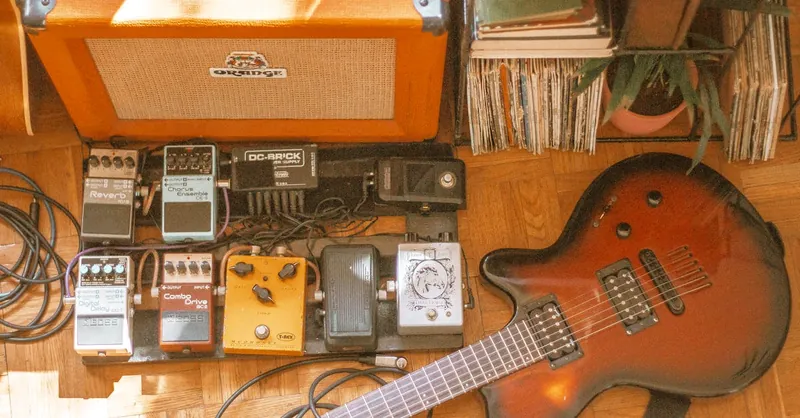
Image courtesy of Alina Vilchenko
Tone Characteristics: Warmth, Brightness, Sustain, and Dynamic Response Compared
When comparing acoustic vs electric guitar sound, understanding their core tone characteristics such as warmth, brightness, sustain, and dynamic response is critical for selecting the right instrument for your playing style and tonal goals.
Warmth and Brightness
Acoustic guitars naturally excel in producing warm, rich tones thanks to their wooden soundboards and hollow bodies. The resonance of tonewoods like spruce or mahogany adds depth and organic complexity, resulting in smooth midrange warmth and rounded bass frequencies. This characteristic warmth enhances fingerstyle playing, folk, jazz, and unplugged sessions where natural timbre and subtle nuances matter.
In contrast, electric guitars tend to deliver brighter, more articulate tones due to their magnetic pickups and solid bodies. The steel strings and pickup type—whether single-coils or humbuckers—greatly influence how bright or dark the sound appears. Single-coils offer sparkling highs and crisp attack, while humbuckers provide a thicker, slightly warmer tone but with less natural resonance than acoustics. Amplifier settings and effects further shape brightness, allowing electric guitarists to dial in anything from shimmering cleans to cutting leads.
Sustain and Dynamic Response
One of the most noticeable differences lies in sustain. Electric guitars generally provide longer sustain, as the solid body construction and amplification preserve string vibrations much longer than acoustic guitars. Tube amplifiers and effect pedals like compressors or delay units can amplify this sustain to create fluid solos and expressive bends vital in rock, blues, and metal genres.
Conversely, acoustic guitars have shorter sustain, constrained by the natural damping of their hollow bodies and soundboard vibrations transferring to the air. However, this results in a highly responsive dynamic range, where subtle picking intensity, finger pressure, and hand position deeply affect volume and tone. This dynamic sensitivity is prized in fingerpicking and classical styles, emphasizing expressiveness over sheer note length.
Summary of Tone Character Differences
| Tone Characteristic | Acoustic Guitar | Electric Guitar |
|---|---|---|
| Warmth | Rich, woody, natural resonance | Variable; depends on pickups & amp |
| Brightness | Balanced with smooth highs | Often brighter and sharper |
| Sustain | Typically shorter | Extended sustain via amplification |
| Dynamic Response | Highly sensitive to playing nuances | Controlled by amp and effects |
This contrast in tone characteristics underscores why acoustic guitars shine in warm, intimate settings and clean, dynamic performances, while electric guitars dominate in versatility, tonal variety, and sustain-dependent lead playing. Understanding these distinctions empowers guitarists to harness the unique sonic strengths of each type for their creative expression.
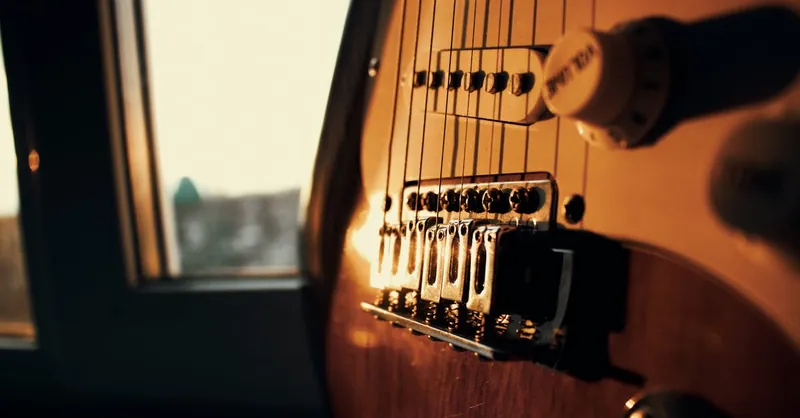
Image courtesy of Ruslan Alekso
Effect of Playing Techniques on Sound: Fingerpicking, Strumming, Bending, and Picking Dynamics
The playing technique you choose profoundly influences the tonal output and expressiveness of both acoustic and electric guitars, often highlighting key sound differences between the two. Techniques such as fingerpicking, strumming, string bending, and picking dynamics interact uniquely with each guitar type’s construction and electronics, shaping their sonic character in distinctive ways.
Fingerpicking and Strumming
Fingerpicking on an acoustic guitar reveals its rich harmonic complexity and dynamic sensitivity. Because acoustic guitars respond naturally to the nuance of each finger’s attack, fingerpicking gestures produce a warm, articulate tone with clear separation between notes. The wooden body resonates sympathetically, enriching the sound with subtle overtones that add depth and texture—ideal for folk, classical, and fingerstyle genres.
In contrast, fingerpicking on electric guitars often offers a brighter, more focused sound due to magnetic pickups capturing string vibrations more directly. This allows for pronounced note clarity and the ability to emphasize individual strings easily. When paired with clean amp settings or effects like compression and delay, fingerpicking can transform into a lush, shimmering tone with extended sustain.
Strumming patterns also vary considerably: Acoustic strumming generates a fuller, more organic sound with natural rhythmic complexity derived from the interaction of pick attack, string resonance, and body vibration. Electric guitar strumming, however, tends to produce a tighter, punchier attack, especially with distortion or overdrive, cutting through mixes with defined rhythmic emphasis.
String Bending and Picking Dynamics
String bending—a hallmark of electric playing— benefits greatly from lighter gauge strings and lower action typical of electric guitars, allowing for smoother pitch modulation and expressive vibrato. The amplifier and effects further enhance these bends with sustained notes and controlled feedback, producing emotive leads in blues, rock, and metal styles.
By comparison, bending on acoustic guitars is more restrained due to higher string tension and thicker gauge strings, resulting in subtler pitch changes. Acoustic bends tend to carry a natural, woody timbre with less sustain, fitting well in genres requiring delicate expressiveness rather than prolonged note holding.
Finally, picking dynamics reflect each guitar’s sensitivity to touch. Acoustic guitars are highly responsive to picking intensity—from gentle plucks to aggressive attacks—affecting volume, tone warmth, and brightness organically. Electric guitars, while also dynamic, channel much of this control through amplifier gain and pedal settings, allowing players to sculpt their sound electronically after the initial string strike.
By mastering how different techniques translate across acoustic and electric guitars, players can better exploit each instrument’s unique timbral possibilities, tailoring their approach for recording, live performance, or personal expression.

Image courtesy of Tima Miroshnichenko
Impact of Gear and Effects Pedals on Each Guitar’s Sound: Overdrive, Reverb, Delay, and More
The sonic identity of both acoustic and electric guitars can be transformed dramatically by the use of gear and effects pedals, making them pivotal tools for guitarists seeking to expand their tonal palette. While acoustic guitars rely mostly on their natural resonance, adding effects like reverb or subtle compression via acoustic-friendly pedals and preamps can enhance their sound, especially in live or recording environments. Effects such as reverb and delay help simulate ambient space and add depth, giving an otherwise dry acoustic tone a rich, immersive quality without compromising its organic warmth. Acoustic-specific gear often focuses on preserving the guitar’s natural dynamics and clarity, avoiding harsh coloration or feedback issues.
In contrast, electric guitars depend heavily on a broad range of effects pedals to shape their sound. Overdrive and distortion pedals are fundamental in creating gritty, saturated tones across genres from blues to metal. These effects alter the harmonic content and sustain, allowing electric guitars to sing with aggressive lead lines or chunky rhythm riffs. Additionally, modulation effects like chorus, phasers, and flangers introduce movement and texture, while delay and reverb pedals add space and ambiance crucial for atmospheric or solo-driven styles. The signal chain’s flexibility—combining pickups, amp settings, and pedals—means electric guitarists can craft signature sounds that acoustic guitars typically cannot replicate.
Popular Effects and Their Role on Each Guitar Type
- Overdrive/Distortion
- Electric: Essential for adding grit and sustain; transforms clean signals into powerful tonal expressions.
-
Acoustic: Generally avoided or used sparingly to prevent masking natural tone; some acoustic-appropriate pedals add mild warmth or gentle saturation.
-
Reverb
- Electric: Adds depth and space, simulating rooms or halls, crucial for ambient and lead sounds.
-
Acoustic: Enhances natural resonance and presence, especially useful in live amplification to fill out the sound.
-
Delay
- Electric: Creates echo effects ranging from slapback to infinite repeats, enriching solos and rhythmic patterns.
-
Acoustic: Used subtly to add dimension without overwhelming delicate dynamics.
-
Compression and EQ
- Both: Compression controls dynamic range for consistent output, vital in both acoustic and electric performance and recording. EQ sculpts frequency balance to fit the guitar neatly into mixes or live sound setups.
Understanding how gear and effects pedals influence acoustic and electric guitar sounds enables guitarists to push creative boundaries while maintaining the distinctive tonal characteristics of each instrument. Whether layering textures with multiple pedals on an electric rig or refining an acoustic’s natural voice with tailored processing, mastering this intersection between guitar and gear is key to unlocking professional-quality sound.
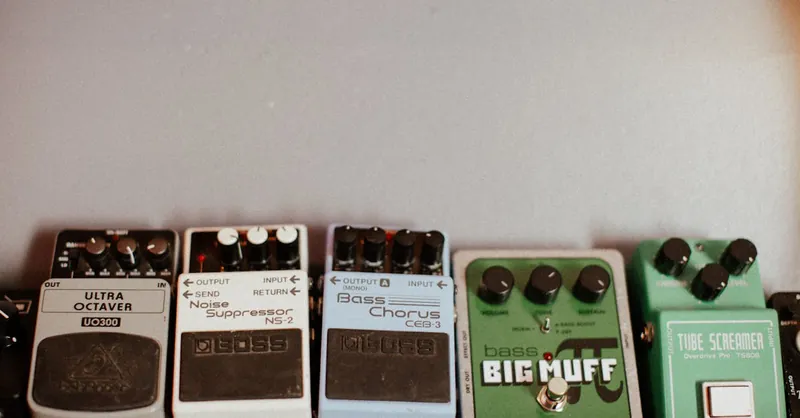
Image courtesy of Kelly
Genre and Style Suitability: Which Guitar Sounds Best for Rock, Blues, Jazz, Folk, and Metal
Choosing between acoustic and electric guitars largely depends on the genre and playing style you aim to master, as each instrument’s distinct sound characteristics lend themselves naturally to certain musical contexts. Understanding which guitar aligns best with genres like rock, blues, jazz, folk, and metal will help you achieve authentic tone and expressiveness while elevating your performance or recording quality.
Rock and Metal: The Electric Guitar’s Domain
For rock and metal, the electric guitar is the definitive choice. Its solid-body construction, magnetic pickups, and the ability to use overdrive and distortion pedals create the aggressive, powerful tones these genres demand. The electric guitar’s extended sustain, high gain capabilities, and dynamic range excel in producing driving riffs, soaring solos, and crunching rhythms. Genres like heavy metal, hard rock, and punk rely heavily on electric guitars for their versatility and capacity to cut through dense mixes with clarity and impact.
Blues and Jazz: A Blend of Both Worlds
In blues, electric guitars often shine due to their expressive sustain, smooth bends, and tonal flexibility through amplifier settings and effects like overdrive. However, acoustic guitars also have a strong presence in acoustic blues traditions, offering warm, woody resonance suited for fingerpicking and slide techniques.
Jazz guitarists tend to favor electric hollow-body or semi-hollow body guitars, which offer a warm, mellow tone combined with the ability to plug into clean amplifiers for smooth, articulate chord voicings and melodic solos. Acoustic guitars, while less common in traditional jazz, provide rich tonal options for unplugged or gypsy jazz styles focused on intricate fingerwork and rhythmic complexity.
Folk and Singer-Songwriter Styles: The Acoustic’s Natural Strength
The acoustic guitar is quintessential for folk, indie, and singer-songwriter genres. Its natural resonance, rich harmonic content, and dynamic sensitivity perfectly support intimate storytelling and melodic accompaniment. Acoustic guitars facilitate expressive strumming patterns and fingerstyle nuance, creating organic textures that define these styles. While electric guitars can sometimes be used in folk or indie music for atmospheric or layered sounds, the acoustic guitar remains the go-to instrument for authentic, unplugged performances and recordings.
Summary of Genre Suitability
| Genre | Preferred Guitar Type | Key Sound Attributes |
|---|---|---|
| Rock | Electric | High gain, sustain, powerful, versatile tone |
| Metal | Electric | Distortion-friendly, aggressive, cutting sustain |
| Blues | Both (Electric & Acoustic) | Expressive bends, warmth, dynamic nuance |
| Jazz | Electric (Hollow/Semi) | Warm, smooth, clean tones with articulate detail |
| Folk/Singer-Songwriter | Acoustic | Rich resonance, natural warmth, dynamic expressiveness |
Selecting a guitar suited for your genre not only enhances your tonal authenticity but also inspires your playing style. Whether you’re chasing the electrified roar of rock or the organic warmth of folk, understanding which guitar sound best fits your musical goals is the key to unlocking your full creative potential.

Image courtesy of Andreu Marquès
Recording and Production Considerations for Acoustic vs Electric Guitars
When it comes to recording and producing acoustic and electric guitars, several critical factors influence the final sound quality and tonal authenticity captured in your mix. Acoustic guitars rely heavily on microphone placement, room acoustics, and high-quality preamps to faithfully reproduce their natural resonance and dynamic range. Common recording techniques for acoustic instruments include using condenser microphones, positioned near the soundhole or 12th fret, often paired with a secondary room mic to capture ambient depth. Proper mic placement helps minimize unwanted boominess or harshness while preserving the guitar’s woody warmth and expressive nuances. Additionally, using pop filters, isolation booths, or reflective panels can prevent excessive room reflections and background noise, which is crucial to maintaining clarity in acoustic guitar recordings.
Conversely, electric guitar recording centers around capturing the amplified signal, which offers more direct control over tone shaping but requires careful amp selection, mic placement on the speaker cabinet, and sometimes direct input (DI) recording combined with amp simulation. The choice of microphone—dynamic mics like the Shure SM57 or ribbon mics— and its placement significantly affects the tonal color, capturing everything from tight, punchy attacks to smooth, warm overdrive. Producers and engineers often blend multiple mic signals or layer DI with amp mics to balance clarity and character. Moreover, electric guitars offer greater flexibility in post-production due to their solid-state signal path, allowing extensive use of EQ, compression, reverb, and amp modeling plugins to enhance or radically alter the sound.
Key recording and production considerations include:
- Acoustic Guitar
- Optimal microphone choice and placement to capture natural resonance
- Room acoustics and isolation for clean, dynamic recordings
-
Minimal signal processing to preserve organic tone
-
Electric Guitar
- Amp and speaker cabinet selection for tonal foundation
- Microphone technique and possible DI plus amp blending
- Extensive use of effects and processing options for sound sculpting
Understanding these differences not only helps in achieving professional-quality recordings but also empowers guitarists and producers to choose the right setup based on the instrument type, genre, and artistic goals. Whether capturing the intimate acoustic fingerstyle or the searing electric lead, a tailored recording approach is essential to unlock the unique sonic essence of each guitar.
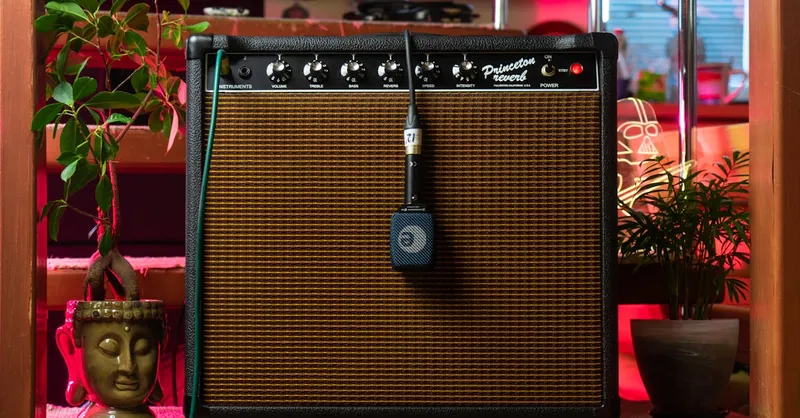
Image courtesy of Alena Sharkova
Portability, Stage Volume, and Practical Applications: Live Performance Versus Studio Use
When deciding between an acoustic and an electric guitar, portability and stage volume are critical practical considerations that significantly impact both live performances and studio sessions. Acoustic guitars, with their hollow bodies and absence of external amplification needs, offer plug-and-play convenience ideal for impromptu gigs, street performances, and singer-songwriter setups. Their self-amplifying design means you don’t have to rely on additional gear to produce sound, making them highly portable and quick to set up. However, their natural projection can be limited in large venue settings, often requiring a microphone or a pickup system combined with a PA to achieve sufficient stage volume without compromising tonal richness.
Electric guitars, by contrast, depend entirely on amplifiers and external effects to generate their sound, which often results in bulkier setups for live use. This can reduce portability but offers unmatched control over stage volume and tonal shaping. Through adjusting amplifier settings and effects pedals, electric guitarists can effortlessly tailor their sound to fill stadiums or intimate clubs alike, from whisper-quiet cleans to powerful, saturated distortion. The ability to control volume independently from playing dynamics makes electric guitars especially versatile in live band contexts where precise mix balancing is essential.
Practical Applications in Live Performance
- Acoustic Guitars
- Best suited for unplugged or semi-amplified settings.
- Favor intimate venues, open mics, coffee houses, and small acoustic ensembles.
- Portability and immediate, authentic tones without amp dependency.
-
May face challenges with feedback and limited volume in loud environments.
-
Electric Guitars
- Designed for amplified stage environments ranging from clubs to large arenas.
- Require amplifier and gear setup, potentially reducing portability.
- Provide extensive volume control, tonal variety, and effects integration.
- Ideal for genres needing dynamic stage presence and tonal flexibility.
Studio Use Considerations
In studio settings, acoustic guitars demand precise microphone techniques and controlled environments to capture their natural warmth and dynamic range accurately. Their direct sound requires minimal processing to maintain authenticity but needs careful attention to room acoustics and mic placement. The portability of acoustic guitars is less critical in studios, where sound isolation and quality prevail.
Electric guitars excel in studios due to their direct electronic output and integration with amps and effects, allowing producers to record clean DI signals alongside mic’ed amps. This multifaceted signal capture provides immense flexibility in post-production tone shaping, layering, and mixing. Although less portable during sessions due to gear requirements, electric guitars enable a broader sonic palette, making them paramount for genres requiring diverse textures and effects.
Understanding these factors around portability, stage volume, and application helps guitarists and producers choose the right instrument for their specific performance or recording context, ensuring optimal sound quality and practical convenience.
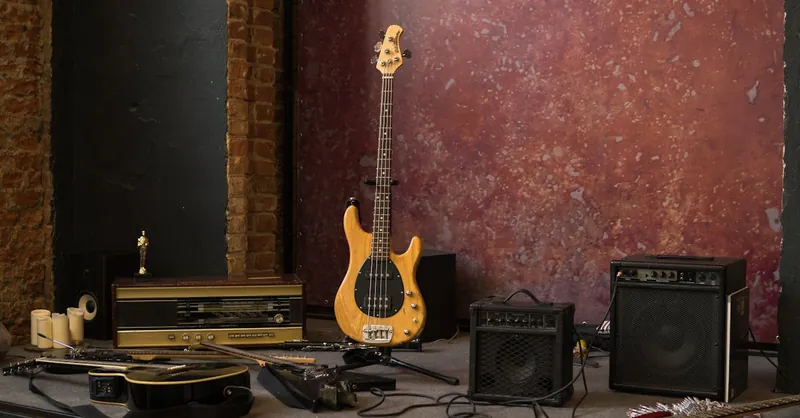
Image courtesy of ArtHouse Studio
Choosing Your Guitar Based on Sound Preferences and Musical Goals
Selecting between an acoustic and an electric guitar ultimately hinges on your personal sound preferences and the musical goals you aspire to achieve. Understanding how each guitar’s tonal characteristics align with your style, genre focus, and performance context will guide you to the ideal instrument that inspires creativity and complements your sonic vision.
If you gravitate towards a warm, organic sound with natural resonance and dynamic expression, especially for unplugged settings or intimate performances, the acoustic guitar is typically the best choice. Its rich harmonic complexity and responsiveness to playing nuances are perfect for genres like folk, singer-songwriter, blues, and classical styles. Additionally, acoustic guitars excel in situations where simplicity and portability are paramount, allowing you to focus on songwriting and melodic articulation without dependence on amplification.
Conversely, if your musical goals involve wide-ranging tonal versatility, sustain, and the ability to incorporate effects such as distortion, modulation, and delay, an electric guitar provides unmatched sonic flexibility. Electric guitars are well-suited for genres like rock, metal, jazz, and blues where tone shaping through amplification and pedals plays a critical role. Their suitability for live band settings, coupled with the capacity to sculpt sounds from clean and bright to gritty and aggressive, makes electric guitars the go-to instrument for expressive soloing, powerful riffs, and stylistic innovation.
Key Considerations When Choosing Your Guitar
- Desired Sound and Tone Palette
- Warm, natural resonance: Acoustic guitar
-
Versatile, effect-driven tone sculpting: Electric guitar
-
Musical Genre and Playing Style
- Fingerpicking, folk, unplugged performances: Acoustic
-
Bending, sustained leads, heavy overdrive: Electric
-
Performance Environment
- Solo gigs without amplification: Acoustic
-
Band performances requiring volume control: Electric
-
Recording and Production Needs
- Organic, unprocessed tones requiring nuanced mic techniques: Acoustic
- Direct input flexibility with amp and effect processing: Electric
By clarifying your sound preferences and musical ambitions, you can make a confident, informed decision that aligns with your artistic path. Selecting the right guitar not only enhances your tonal authenticity but also fuels your motivation to practice, perform, and produce music that genuinely resonates with your creative identity.
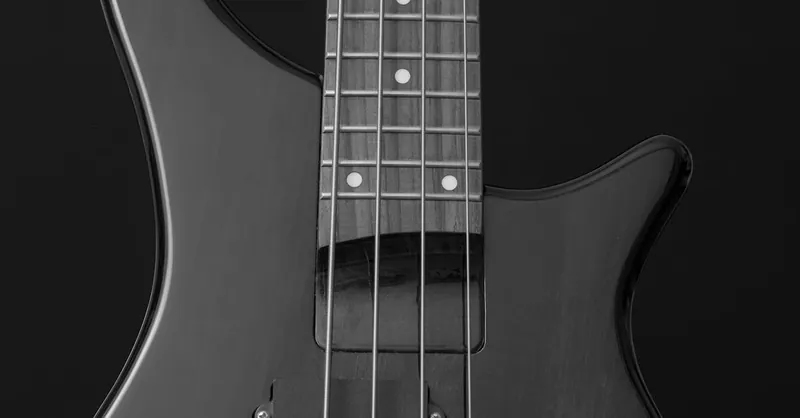
Image courtesy of Pixabay
